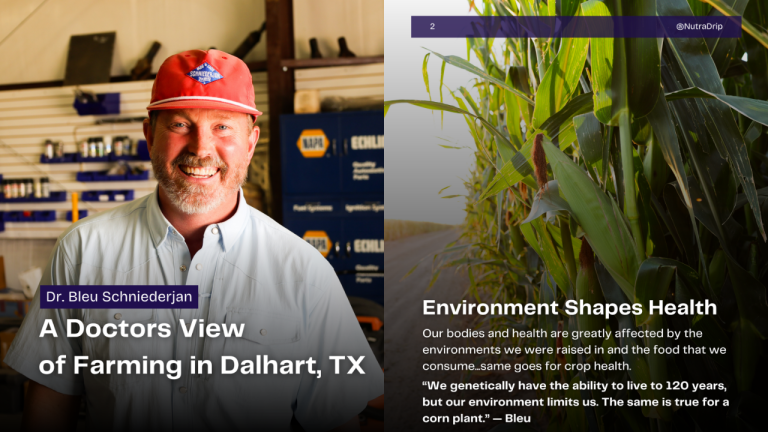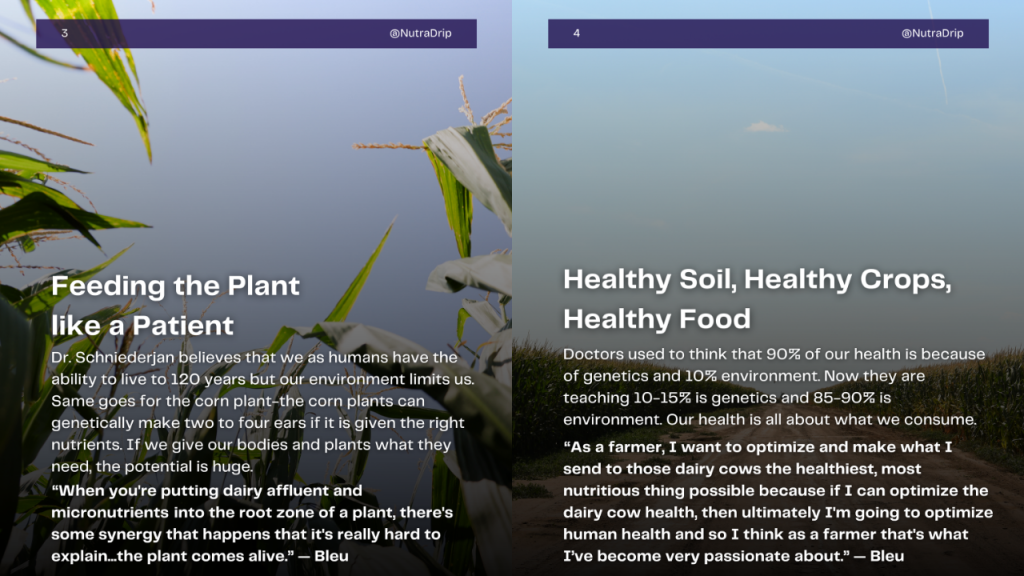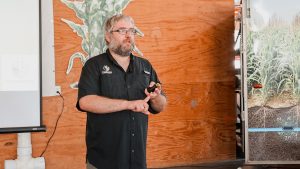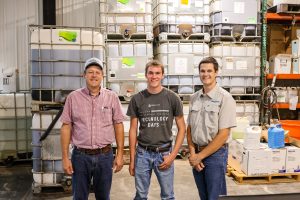Introduction to Bleu Schniederjan
Dr. Bleu Schniederjan isn’t your typical farmer. By profession, he’s a physician and surgeon in Amarillo, TX—but his heart is deeply rooted in agriculture. Bleu grew up on his grandfather’s farm in Dalhart, Texas, and even while pursuing medicine, he carried his passion for agronomy. With a degree in agronomy from Texas Tech, Bleu combines science, stewardship, and faith to guide how he farms today.
Five years ago, he bought his family farm back and began transforming it into a model of efficiency, sustainability, and innovation—centered around subsurface drip irrigation with effluent (SDI-E).
About Dalhart, Texas
Dalhart, located in the Texas Panhandle, is an ag-driven community where crops like corn, sorghum, wheat, and cotton dominate. In recent decades, dairies have become major players in the region, shifting much of the production toward silage crops. Like many farmers in the Panhandle, Bleu faces the challenges of extreme heat, minimal rainfall, and declining groundwater from the Ogallala Aquifer.
His solution: embrace water conservation and soil health principles through regenerative farming and SDI-E technology.
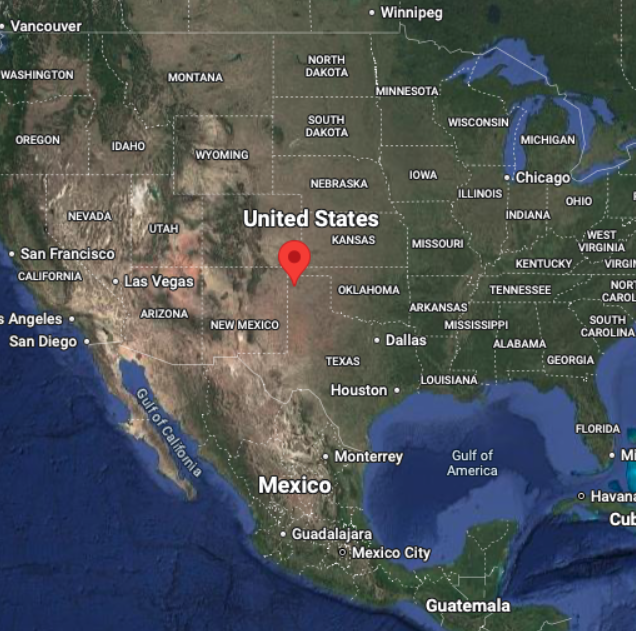
Farming with Family
For Bleu, farming is a family affair. His sister, brother-in-law, and even nieces and nephews work alongside him in the fields. Jamie and Jordan Puga, Bleu’s brother- and sister-in-law, handle much of the irrigation work. Growing up in Dalhart, pivots were all they ever knew—until Bleu introduced them to SDI.
Working with family isn’t always easy, but Bleu sees it as one of the greatest blessings of his life. Every day is an adventure, from rotational grazing in the early years to now managing high-efficiency drip irrigation.
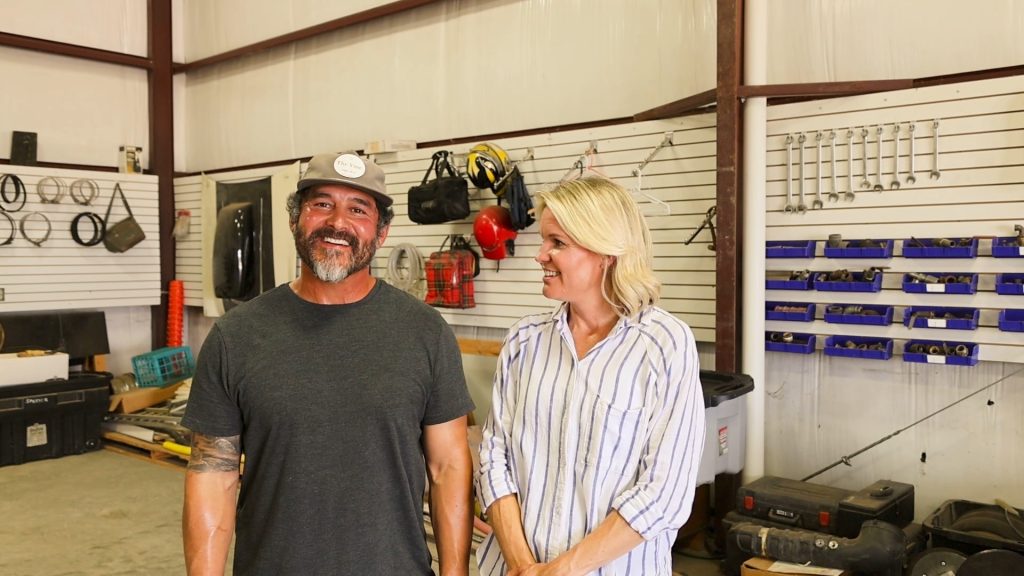
How Bleu Got Introduced to SDI and NutraDrip
Bleu had dreamed of installing drip irrigation for years. His background in agronomy kept him focused on water use efficiency and nutrient management, knowing how critical those factors are in the Panhandle’s climate.
That dream became reality when he partnered with NutraDrip. “It’s been the best decision I’ve ever made,” Bleu says. NutraDrip installed 400 acres of SDI-E in just three weeks, running two shifts a day. From installation to weekly agronomy support and rodent control, Bleu emphasizes NutraDrip’s commitment to excellence.
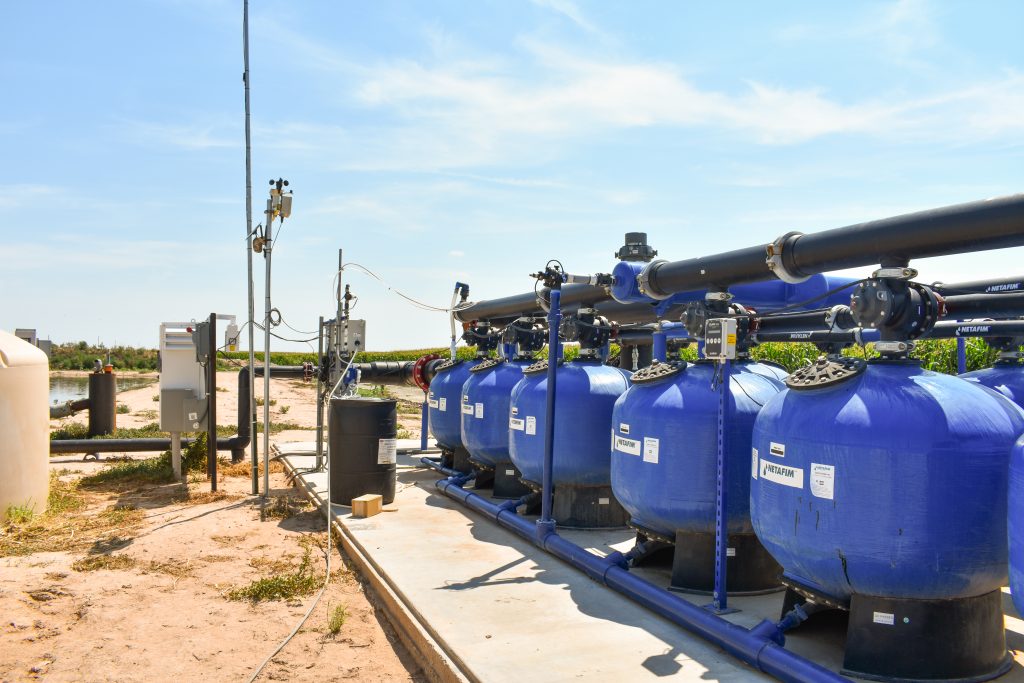
Introducing Jake Myatt
A key influence on Bleu’s decision came from his partnership with Bill and Jake Myatt, who have been using drip irrigation in the region for over 20 years. Jake’s experience with fields still producing after two decades underlines the longevity and reliability of SDI systems. For Bleu, seeing that success firsthand made it clear that SDI-E was worth the investment.
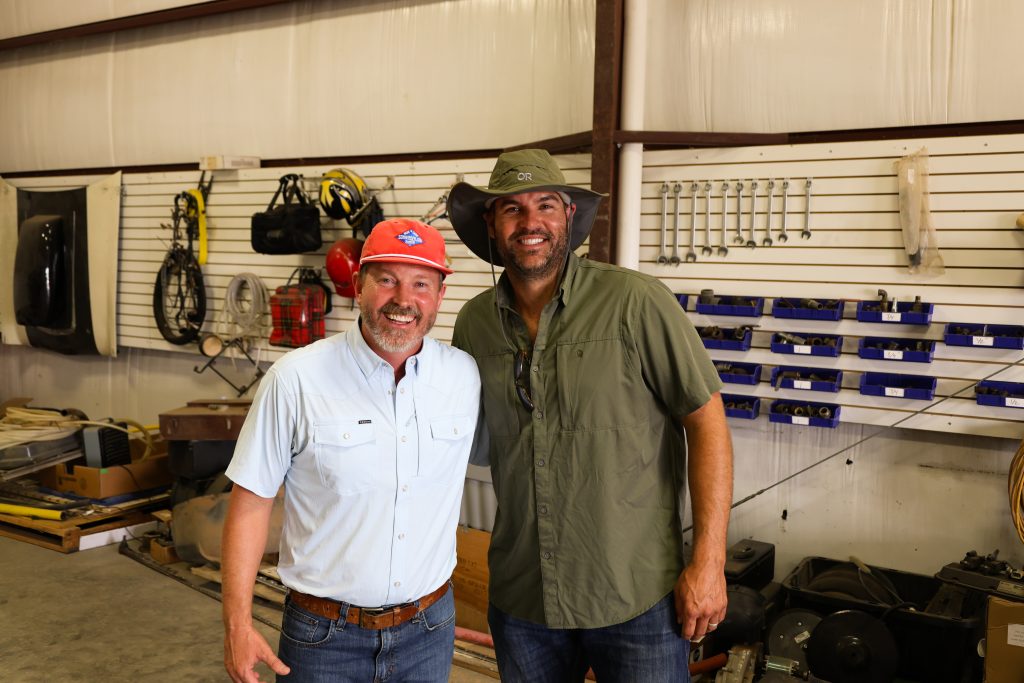
Comparing Pivots to SDI
Jamie and Jordan put it simply: “It’s a hundred times better than the pivot.”
Bleu’s own fields prove it. On corn, his SDI-E system applied just 10.1 inches of fresh water plus 1.3 inches of dairy effluent—producing 30–32 tons of silage. Under pivots, he needed 25 inches of water for a comparable yield.
Not only does SDI reduce water usage, but it also offers crop flexibility. With drip irrigation, Bleu can shift water between wheat, corn, and forage sorghum throughout the season. That efficiency and precision just isn’t possible with pivots.
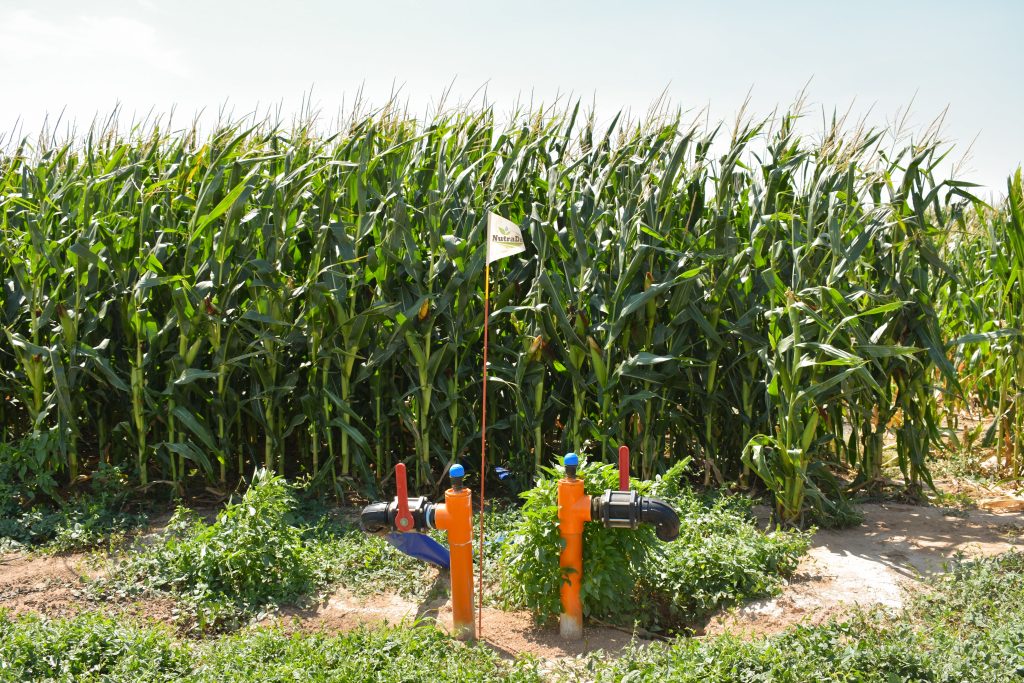
Water Savings in a Declining Aquifer
For Dalhart farmers relying on the Ogallala Aquifer, every drop counts. Bleu estimates water savings well beyond the commonly cited 30% efficiency gain of SDI. More importantly, drip irrigation keeps yielding consistent in dry years—something pivots can’t match.
As Jake puts it, “If you don’t invest in more efficient irrigation, you’re looking at going back to dryland farming.”
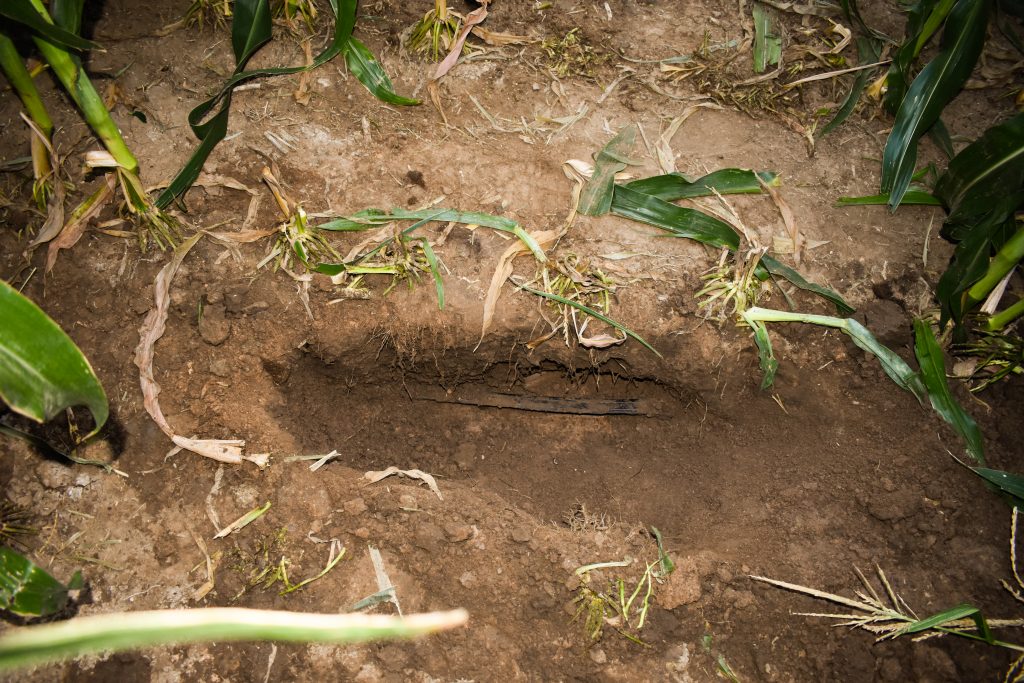
Nutrient Management with Effluent
SDI-E allows Bleu to deliver dairy effluent and micronutrients directly into the root zone. With NutraDrip’s system, nutrients are precisely blended at the drip filter station using an EC valve that tracks nitrogen content. Weekly sap analysis helps fine-tune applications of zinc, boron, iron, copper, molybdenum, and sulfur.
Bleu compares it to human health: “We genetically have the ability to live to 120 years, but our environment limits us. It’s the same with a corn plant—it can reach its potential if we give it the right environment.”
This synergy of water, nutrients, and soil health creates crops that thrive—improving not only yields but also the nutritional value of the silage that feeds local dairy herds.
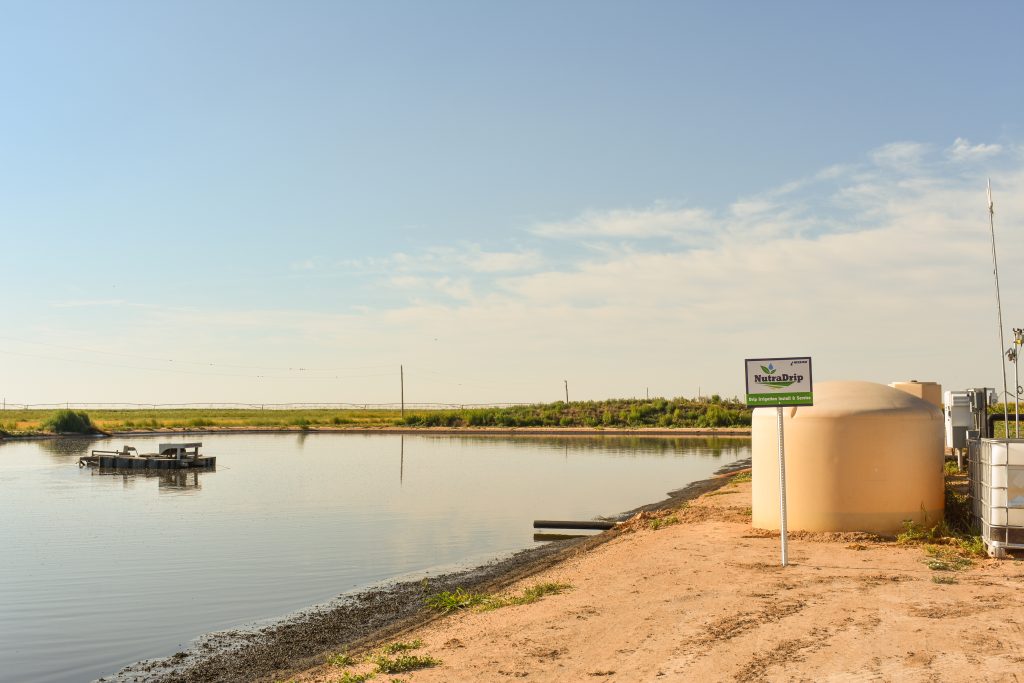
Partnering with a Dairy
Bleu’s partnership with a local dairy is central to his SDI-E success. Instead of hauling and spreading effluent, the dairy sends it directly to Bleu’s lagoon. From there, the effluent is screened, blended with fresh water, and delivered through the drip system.
This closed-loop system saves the dairy on trucking costs while providing Bleu’s farm with a steady, sustainable nutrient source. “It’s been a win-win relationship,” Bleu says.
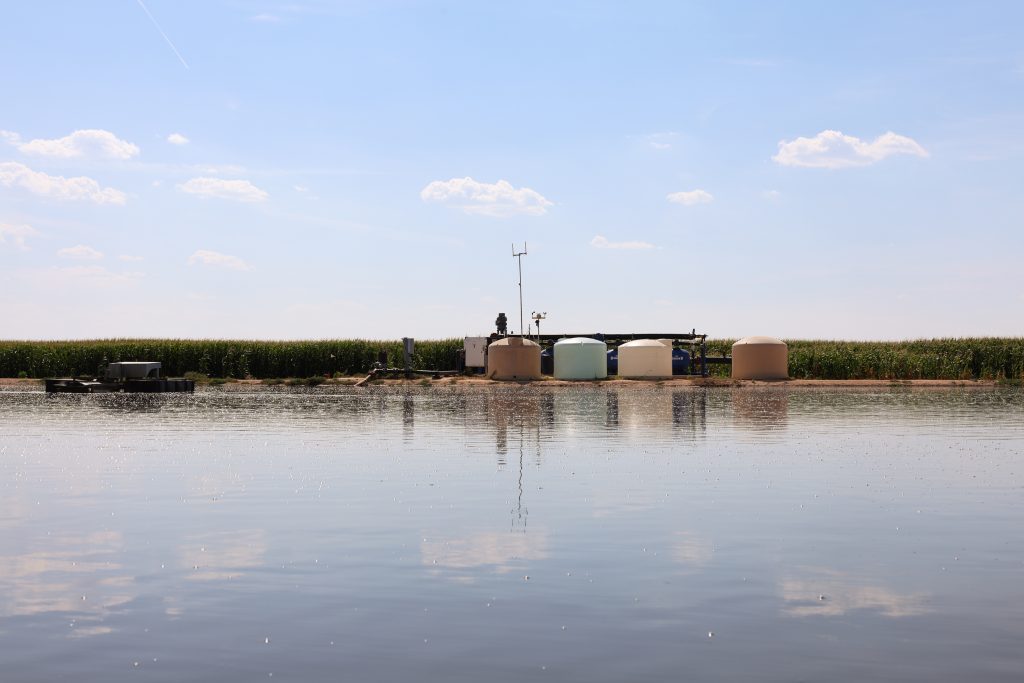
Proving SDI Works for Farmers
Bleu’s system shows what’s possible with SDI-E:
- Higher efficiency with less water.
- Nutrient delivery at the root zone for maximum uptake.
- Consistent yields even in drought years.
For skeptical farmers, Bleu’s advice is simple: “A hundred percent—drip irrigation is worth it. Install it as fast as you can.”
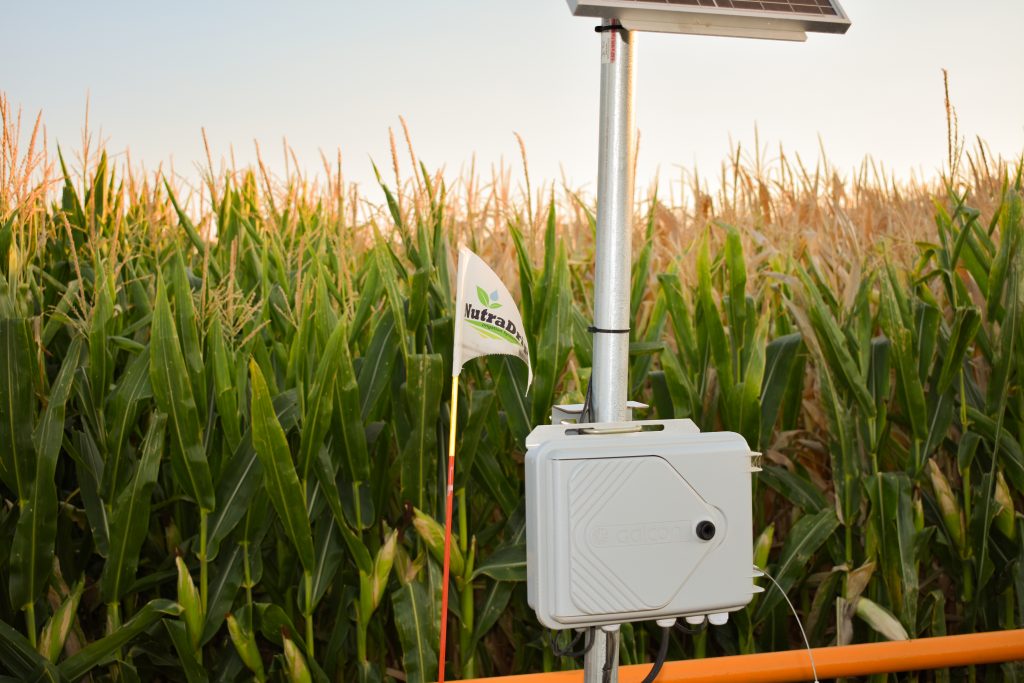
Bleu’s Experience with SDI and NutraDrip
Looking back, Bleu says choosing SDI-E with NutraDrip has been the most impactful decision he’s made as a farmer. With another 620 acres scheduled for drip installation, his goal is clear: expand SDI across his entire farm as quickly as possible.
NutraDrip’s ongoing support, from weekly agronomy visits to system optimization, has ensured long-term success. Unlike some early drip projects in the Panhandle that left farmers frustrated, NutraDrip’s commitment has rebuilt trust in SDI as a sustainable solution.
For Bleu, SDI-E is about more than just saving water—it’s about ensuring family, farm, and food security for the next generation.
